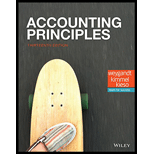
Concept explainers
a.
Job order costing is a cost evaluation method that considers each job separate and assigns costs to them. It is mostly applicable in the service industry wherein every job has a separate requirement.
To compute: Predetermined
b.
Job order costing:
Job order costing is a cost evaluation method that considers each job separate and assigns costs to them. It is mostly applicable in the service industry wherein every job has a separate requirement.
To prepare: The job cost sheet for Jobs 50, 51, and 52.
c.
Job order costing:
Job order costing is a cost evaluation method that considers each job separate and assigns costs to them. It is mostly applicable in the service industry wherein every job has a separate requirement.
To prepare: The
d.
Job order costing:
Job order costing is a cost evaluation method that considers each job separate and assigns costs to them. It is mostly applicable in the service industry wherein every job has a separate requirement.
To prepare: The journal entries for raw materials, factory labor costs incurred and manufacturing overhead costs incurred, use overhead rate.
e.
Job order costing:
Job order costing is a cost evaluation method that considers each job separate and assigns costs to them. It is mostly applicable in the service industry wherein every job has a separate requirement.
To prepare: The journal entries on completion of Job 50 and 51.
f.
Job order costing:
Job order costing is a cost evaluation method that considers each job separate and assigns costs to them. It is mostly applicable in the service industry wherein every job has a separate requirement.
To prepare: The journal entries for sale goods during the month.
g.
Job order costing:
Job order costing is a cost evaluation method that considers each job separate and assign cost to them. It is mostly applicable in the service industry wherein every job has a separate requirement.
To compute: The cost of ending inventory.
Want to see the full answer?
Check out a sample textbook solution
Chapter 20 Solutions
EBK ACCOUNTING PRINCIPLES
- Please provide the solution to this general accounting question using proper accounting principles.arrow_forwardCan you solve this financial accounting problem with appropriate steps and explanations?arrow_forwardMurray Industries applies manufacturing overhead to its cost objects on the basis of 75% of direct material cost. If Job 37A had $96,000 of manufacturing overhead applied to it during July, the direct materials assigned to Job 37A was: A. $72,000 B. $96,000 C. $128,000 D. $144,000arrow_forward
- Arden Manufacturing uses a process costing system. Beginning inventory for June consisted of 2,400 units that were 55% completed. 14,500 units were started during June. On June 30, the inventory consisted of 1,200 units that were 40% completed. How many units were completed during the period?arrow_forwardThe total assets are?arrow_forwardProvide answerarrow_forward
- How does reciprocal accounting differ from standard intercompany accounting? a. Mutual transactions simultaneously affect both entities' records b. One entity records the transaction first c. Transactions are recorded at year-end only d. Each entity keeps independent recordsarrow_forwardCan you explain this general accounting question using accurate calculation methods?arrow_forwardFinancial Accountingarrow_forward
- Can you demonstrate the accurate method for solving this financial accounting question?arrow_forwardKahlo Industries uses a predetermined factory overhead rate based on direct labor-hours. For October, Kahlo's budgeted overhead was $180,000 based on a budgeted volume of 15,000 direct labor-hours. Actual overhead amounted to $192,000, with actual direct labor-hours totaling 14,200. Required: What was over- or underapplied manufacturing overhead in October?arrow_forwardWhat is the total equity for Orion tools at year end ?arrow_forward
 Principles of Cost AccountingAccountingISBN:9781305087408Author:Edward J. Vanderbeck, Maria R. MitchellPublisher:Cengage LearningPrinciples of Accounting Volume 2AccountingISBN:9781947172609Author:OpenStaxPublisher:OpenStax College
Principles of Cost AccountingAccountingISBN:9781305087408Author:Edward J. Vanderbeck, Maria R. MitchellPublisher:Cengage LearningPrinciples of Accounting Volume 2AccountingISBN:9781947172609Author:OpenStaxPublisher:OpenStax College College Accounting, Chapters 1-27AccountingISBN:9781337794756Author:HEINTZ, James A.Publisher:Cengage Learning,
College Accounting, Chapters 1-27AccountingISBN:9781337794756Author:HEINTZ, James A.Publisher:Cengage Learning, Cornerstones of Cost Management (Cornerstones Ser...AccountingISBN:9781305970663Author:Don R. Hansen, Maryanne M. MowenPublisher:Cengage Learning
Cornerstones of Cost Management (Cornerstones Ser...AccountingISBN:9781305970663Author:Don R. Hansen, Maryanne M. MowenPublisher:Cengage Learning Managerial AccountingAccountingISBN:9781337912020Author:Carl Warren, Ph.d. Cma William B. TaylerPublisher:South-Western College Pub
Managerial AccountingAccountingISBN:9781337912020Author:Carl Warren, Ph.d. Cma William B. TaylerPublisher:South-Western College Pub Financial And Managerial AccountingAccountingISBN:9781337902663Author:WARREN, Carl S.Publisher:Cengage Learning,
Financial And Managerial AccountingAccountingISBN:9781337902663Author:WARREN, Carl S.Publisher:Cengage Learning,





